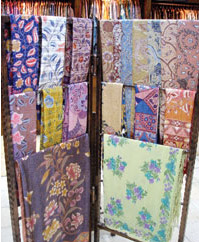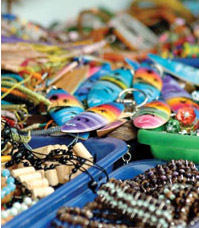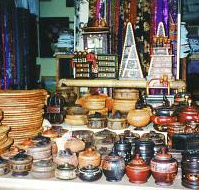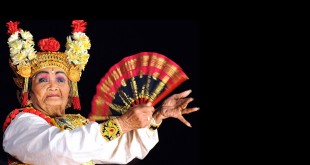 Virtually everybody comes to Bali to shop, and even if shopping wasn’t the ultimate aim, you’ll still end up with fascinating and irresistible buys. Go on a spree around the island to each of its characteristic areas, which can offer great bargains with the best selection of arts and crafts, textiles and common knick-knacks from the outbacks.
Virtually everybody comes to Bali to shop, and even if shopping wasn’t the ultimate aim, you’ll still end up with fascinating and irresistible buys. Go on a spree around the island to each of its characteristic areas, which can offer great bargains with the best selection of arts and crafts, textiles and common knick-knacks from the outbacks.
Here we’ll list some of the highlighted playgrounds in which to test your cunning ‘bargainism’. Let’s start off with the center, the city of Denpasar. The capital of Bali, Denpasar, actually shouts out the local jargon for ‘market’ in its name.
Batik and traditional textile varieties, souvenirs and miscellany, and tropical fruit — taste and enjoy these while on holiday here!
The largest traditional market, Pasar Badung, is the central trading playground of the island, where all the harvests of fruits and vegetables, as well as crafts and utensils for the locals’ daily needs can be found. Across the Badung River, is its sister, Pasar Kumbasari, mostly selling wares of low turnover such as clothing, souvenirs and household tidbits, but the market stalls are currently being rebuilt due to a recent fire.
 The major road at front of these markets is called Jalan Gajah Mada, where various shops and restaurants reside, but each has very uncertain opening hours. From the busy parking lot of the Pasar Badung, access is via the one-way Jalan Sulawesi, where traditional dokar horse carriages park while waiting to transport sellers and their wares. Here you’ll find bargains on fabrics, from brocade to batik, established by generations of trading Gujarati and Persian merchants.
The major road at front of these markets is called Jalan Gajah Mada, where various shops and restaurants reside, but each has very uncertain opening hours. From the busy parking lot of the Pasar Badung, access is via the one-way Jalan Sulawesi, where traditional dokar horse carriages park while waiting to transport sellers and their wares. Here you’ll find bargains on fabrics, from brocade to batik, established by generations of trading Gujarati and Persian merchants.
Down south against the traffic, Jalan Hasanudin has the notorious array of gold and silver traders, most frequented by locals busy in their simple investments. Little old ladies on stools holding bags and purses of their ‘freelance’ trade have become a common scene in front of these shops.
Close by, near the Puputan civic center or alun-alun, is Pasar Satriya, the pet and bird market. Although there have been significant government official confiscations of protected species, and though you might not want (and be able to) purchase them yourself, the sights and sounds of the various fauna sold here gives you an idea of the locals’ favored pets.
The shopping center in Sanur can be found on Jalan Danau Tamblingan, where the situation is similar to Kuta’s ‘Pasar Seni’ but with very few hawkers. An array of boutiques and restaurants line this road.
 If Jalan Hasanudin didn’t please you, head off onto the bypass towards the Celuk and Mas area. These are two famed areas for gold and silver. The artisans are well known for their quality and various designs, and many brands have been cultivated from the local craftsmanship and expertise.
If Jalan Hasanudin didn’t please you, head off onto the bypass towards the Celuk and Mas area. These are two famed areas for gold and silver. The artisans are well known for their quality and various designs, and many brands have been cultivated from the local craftsmanship and expertise.
Before reaching there you will pass the Batubulan area as you enter the Gianyar border, a road trip that pleases the eye with lineups of amazing stone sculptures of various shapes and sizes, traditional and modern. Stop by to admire the results of the craftsman’s artistic skills.
Sukawati is popular for its Art Market, and it has had this reputation for ages. Being chock-full of arts and crafts in great variety, it is thus the ultimate bargaining playground. Ubud on the other hand is rather high-end, full of fine arts with an international standard and home to ‘big name’ galleries.
Up in Tegalalang, the roadside is alive with various woodcarvings that seem to change with the season, so remember the road scene here this time and try to recall the different collections on your next trip a month later. Bona is the village and home to the bamboo craftsmen. The products range from bamboo furniture to mats and wind chimes.
 Far away to the east, visit the village of Kamasan in the regency of Klungkung, where painting styles with natural pigments are typical here, earning the reputation of the ‘Kamasan style’. For an historical perspective, view them at the Kertagosa Hall of Justice in the center of town. Also in this regency are the famed works of brass and copper from the village of Tihingan, producers of the island’s finest gamelan instruments and metalwork souvenirs.
Far away to the east, visit the village of Kamasan in the regency of Klungkung, where painting styles with natural pigments are typical here, earning the reputation of the ‘Kamasan style’. For an historical perspective, view them at the Kertagosa Hall of Justice in the center of town. Also in this regency are the famed works of brass and copper from the village of Tihingan, producers of the island’s finest gamelan instruments and metalwork souvenirs.
Zooming across to the west, the Kapal main road is aligned with shops selling traditional housing materials, temple and shrine pieces, and garden statuettes. Nearby is the island’s main cattle market, selling mostly livestock and farming tools.
Get out of the mundane mall, and if you’ve had enough of those Paris designer labels ask your hotel tour desk for a driver and go shop in the island’s more interesting regions. And while you’re at it, mind your cash!
Text By Elisa Jayanti
Article Source : baliandbeyond.co.id




